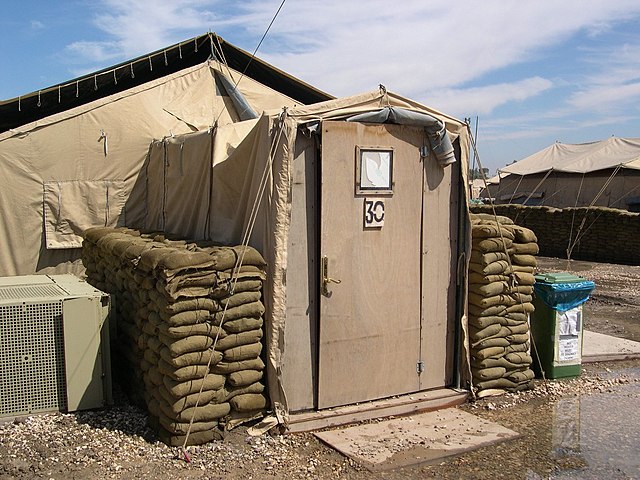A yurt or ger (Mongolian) is a portable, round tent covered and insulated with skins or felt and traditionally used as a dwelling by several distinct nomadic groups in the steppes and mountains of Inner Asia. The structure consists of a flexible angled assembly or latticework of wood or bamboo for walls, a door frame, ribs, and a wheel possibly steam-bent as a roof. The roof structure is sometimes self-supporting, but large yurts may have interior posts supporting the crown. The top of the wall of self-supporting yurts is prevented from spreading by means of a tension band which opposes the force of the roof ribs. Yurts take between 30 minutes and 3 hours to set up or take down, and are generally used by between five and 15 people. Nomadic farming with yurts as housing has been the primary life style in Central Asia, particularly Mongolia, for thousands of years.
Traditional home
Building process of Mongol Ger
Ancient Mongol Ger
A traditional Kyrgyz yurt
A tent is a shelter consisting of sheets of fabric or other material draped over, attached to a frame of poles or a supporting rope. While smaller tents may be free-standing or attached to the ground, large tents are usually anchored using guy ropes tied to stakes or tent pegs. First used as portable homes by nomads, tents are now more often used for recreational camping and as temporary shelters.
A modern two-person, lightweight hiking dome tent; it is tied to rocks as there is nowhere to drive stakes on this rock shelf
Roman Army leather tents (centre left), as depicted on Trajan's Column in Rome (photo of plaster casts)
A Berber tent near Zagora, Morocco
U.S. Army tent with constructed wooden entrance, air conditioner, and sandbags for protection. Victory Base, Baghdad, Iraq (April 2004).








